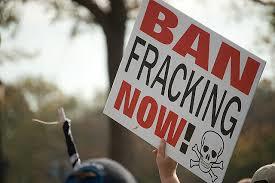Studies Show Fracking Ban Would Wreak Havoc On US Economy
Authored by Tim Benson via WattsUpWithThat.com,
A new study from the American Petroleum Institute (API), with modeling data provided by the consulting firm OnLocation, details how a nationwide ban on hydraulic fracturing (colloquially known as “fracking”) could trigger a recession, would seriously damage U.S. economic and industrial output, considerably increase household energy costs, and make life much harder and costlier for American farmers.
In America’s Progress at Risk: An Economic Analysis of a Ban on Fracking and Federal Leasing for Natural Gas and Oil Development, API argues that a fracking ban would lead to a cumulative loss in gross domestic product (GDP) of $7.1 trillion by 2030, including $1.2 trillion in 2022 alone. Per capita GDP would also decline by $3,500 in 2022, with an annual average decline of $1,950 through 2030. Annual household income would also decline by $5,040.
In 2022 alone, 7.5 million jobs would be lost (almost 5 percent of the U.S. total workforce), while annual job losses would average roughly 3.8 million through 2030. More than 3.6 million jobs would be lost in five states alone in 2022: 1.103 million in Texas, 765,000 in California, 711,000 in Florida, 551,000 in Pennsylvania, and 500,000 in Ohio. States with the highest job losses as a share of overall employment would be North Dakota (76,000), Oklahoma (319,000), New Mexico (149,000), Wyoming (48,000), Louisiana (321,000), West Virginia (109,000), Kansas (208,000), and Colorado (353,000).
Household energy costs would also increase significantly, 14 percent by 2030, even though household energy use is projected to decline by 12 percent. American families would see, on average, a $618 annual increase in their energy costs, as electricity prices would rise by, on average, 20 percent annually. Gasoline prices would also increase by 15 percent.
Farm incomes would decline by 43 percent, with a cumulative loss in farm income of $275 billion, or more than $25 billion on average annually. The costs of wheat farming would increase by 64 percent, while corn farming costs would increase by 54 percent and the costs of soybean farming would increase by 48 percent.
This is not the only recent study to highlight the immense economic costs of a ban on hydraulic fracturing. A report released in November 2019 by the U.S. Chamber of Commerce’s Global Energy Institute concludes a ban would eliminate 19 million jobs through 2025 and reduce GDP by $7.1 trillion. The report also estimates household incomes would be reduced by $3.7 trillion by 2025. Consumers would be paying $5,661 more per capita for energy and goods and services thanks to a doubling of gasoline prices and a 324 percent increase in the price of natural gas over that same time period.
The fracking revolution of the past dozen years has considerably spurred economic development throughout the United States. According to the Federal Reserve Bank of Dallas, the shale industry alone drove 10 percent of U.S. GDP from 2010 to 2015. In 2018, according to the National Bureau of Economic Research, oil and gas extraction accounted for $218 billion of U.S. economic output.
A September 2019 report conducted by Kleinhenz & Associates for the Ohio Oil and Gas Energy Education Program shows increased oil and natural gas production from fracking has saved American consumers $1.1 trillion in the decade from 2008 to 2018. This breaks down to more than $900 in annual savings to each American family, or $9,000 in cumulative savings.
Meanwhile, the White House Council of Economic Advisors estimated in October 2019 that fracking saves American families $203 billion annually on gasoline and electricity bills, roughly $2,500 per family. For low-income families, who spend the largest share of their income on energy costs, these savings are very significant. For those families in the lowest income quintile, it represents a savings of 6.8 percent of their total income.
Hydraulic fracturing activity delivers $1,300 to $1,900 in annual benefits to local households, including “a 7 percent increase in average income, driven by rises in wages and royalty payments, a 10 percent increase in employment, and a 6 percent increase in housing prices,” according to a December 2016 study conducted by researchers at the University of Chicago, Princeton University, and the Massachusetts Institute of Technology.
Another study published in the American Economic Review in April 2017 found “each million dollars of new [oil and gas] production produces $80,000 in wage income and $132,000 in royalty and business income within a county. Within 100 miles, one million dollars of new production generates $257,000 in wages and $286,000 in royalty and business income.”
Hydraulic fracturing enables the cost-effective extraction of once-inaccessible oil and natural gas deposits. These energy sources are abundant, inexpensive, environmentally safe, and can ensure the United States remains a leading energy producer for years to come. Therefore, policymakers across the country should refrain from considering any sort of fracking ban or moratorium, while also making sure not to place unnecessary burdens on the natural gas and oil industries, which are safe and positively impact their states’ economies.
https://ift.tt/3avxLln
from ZeroHedge News https://ift.tt/3avxLln
via IFTTT


0 comments
Post a Comment